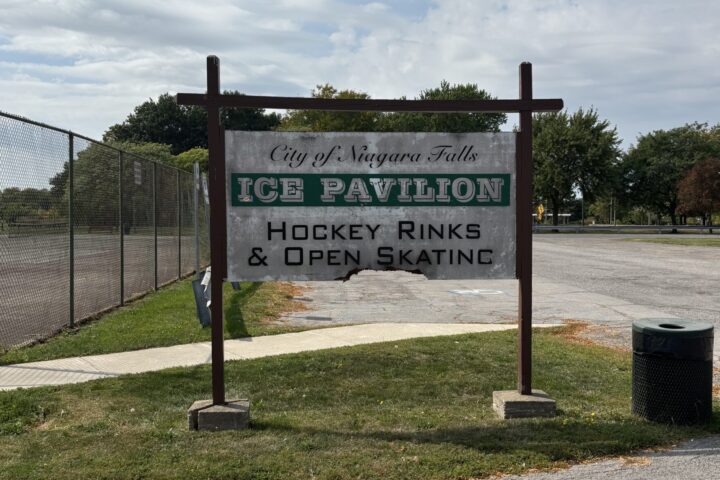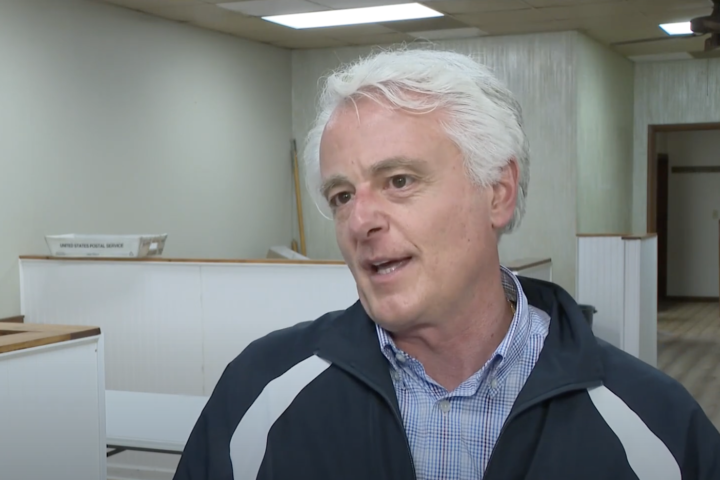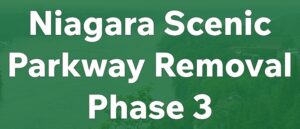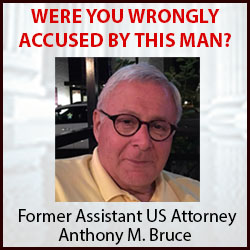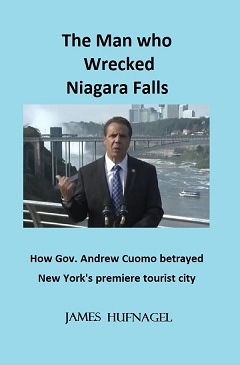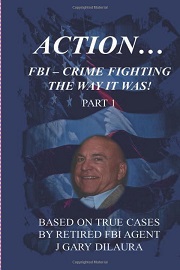The following is Part Three of an ongoing series by investigative journalist Ken Cosentino.
Part One recap: Niagara Falls DPW removed a sensory garden owned by a family whose 15 year old son has autism. The sensory garden occupied both public and private property. Local journalist Mark Scheer first reported the story on Friday, April 25th, three days after the incident. Scheer’s Niagara Gazette article and a social media uproar prompted a media frenzy, and the news was covered by WGRZ, WIVB and WKBW. As a direct response to the media coverage, the executive office of the City of Niagara Falls released a much anticipated official statement which lacked important information and misrepresented facts.
Part Two recap: The photos of the sensory garden taken by the city inspector on April 3rd revealed no plant or vegetable growth due to the fact that winter had just ended. In these photos; bricks, logs and cinder blocks were out of place and the garden needed seasonal tending. The press release points out that the photo published by the Niagara Gazette shows the garden in full bloom which was not how it looked when it was destroyed. The City seems to contend that the garden, as it appears on April 3rd, is how it always looks; and that the Gazette photo is irrelevant. For this to be a fair comparison, the city inspector should have visited the property in the summertime while the garden is in full bloom, and not immediately after the snow melted.
THE PLOT THICKENS
After the media frenzy, and hiding behind the name of the executive office, the City administration released a nine page press release with accompanying photographs. The City’s press release makes no mention of a refrigerator which was found in the family’s backyard, but it does state “In the last 48 hours, there has been much interest and concern expressed by some local media and members of the public as to how the City addresses the issue of protecting the health and safety of the public relative to illegal uses of public rights of way, as well as the health hazards caused by accumulation of debris, garbage (including organic waste, refuse, and animal feces), junk, rubbish, and weeds on private property.”

In his public statement, Council Chairman Jim Perry wrote “The lady in the article was quoted as saying it was something that made her autistic son happy. I was told by a couple of the city workers that there was a refrigerator in her backyard with the door still attached. Now if I had a child and was concerned about his welfare, autistic or not, isn’t that something to be concerned about?”

Indeed, there was a refrigerator in the family’s backyard which was covered with a tarp all winter long. Kenneth Johnson, Jr. says that they would plug it into an extension cord in the summertime and use it for backyard cookouts. When I visited the property, I saw the extension cord dangling from a window near the spot where the fridge was located. Justine Burger says they were told by DPW workers that the fridge was a violation because the door was still attached.
It is not known whether the city inspector discovered the refrigerator on April 3rd or if DPW stumbled onto it during the clean up on April 21st. The photo above appears to have the same format displaying the date in the bottom right corner, but only the month (04) is visible. This might suggest that the photo was taken on April 3rd during the inspection, but it is perhaps equally possible that the photo was taken on April 21st.
The City did not indicate whether or not the city inspector actually ever viewed or entered the backyard during the April 3rd inspection. This photo was not included in the City’s official press release but it was released on Facebook by Jim Perry.
According to NYS Penal Code § 270.10 – Creating a hazard: “A person is guilty of creating a hazard when: 1. Having discarded in any place where it might attract children, a ‘container which has a compartment of more than one and one-half cubic feet capacity and a door or lid which locks or fastens automatically when closed and which cannot easily be opened from the inside, he fails to remove the door, lid, locking or fastening device.’”
Those found guilty of “creating a hazard” have committed a Class B misdemeanor; and an outdoor fridge with the door still attached might be interpreted as a hazard in New York State. If the refrigerator was deemed a hazard, then it stands to reason that DPW would have effectively removed the hazard by removing the fridge. The presence of the fridge in the backyard does not justify a full clean sweep of the front yard.
When I visited the property and spoke with Justine and Kenneth, they told me that there was not an unreasonable amount of dog feces in their backyard when DPW showed up. The City’s press release mentioned animal feces but no photos were included. Unless the city inspector entered the backyard and took photos of the dog feces on April 3rd, there may be no physical evidence of the feces itself.
The City’s press release made no mention of the refrigerator. The press release does not include any photos of the refrigerator, but it does include the inspection photos from April 3rd which inclusively feature the front of the property only. If the fridge is in fact the “public hazard” that was found on private property, why isn’t it mentioned in the City’s press release?

SERIOUS QUESTIONS DEMAND SERIOUS ANSWERS
Did the city inspector enter the backyard on April 3rd and take photos of the fridge, which Justine and Kenneth say was covered by a tarp? If so, where are the backyard photos from the inspection and why weren’t they included in the City’s press release? Is the refrigerator and feces listed among the violations itemized by the city? If so, will the City release the itemized list to the press willingly?
Certainly, the City cannot take action without confirmation of actual evidence against someone’s private property; nor can they base their actions solely on complaints they may have received. Certainly, every recorded violation must have also been witnessed by either the city inspector on April 3rd or by the DPW workers on April 21st. Curiously, any confirmed violations on private property which the City may have deemed a hazard to public health are not directly addressed in the City’s press release.
DPW acted under Ordinance 738, which was amended in January giving DPW Director Ken Tompkins the power to ‘declare that an emergency exists relating to health, public safety or the public right away [sic], thereby necessitating an immediate removal of the offending property condition, without the issuance of an Order of Cleanup, which may result in the assessment of costs and administrative penalties,’ etc.”
This type of action would require Tompkins to deliver a written declaration to City Administrator Anthony Restaino prior to the April 21st clean up. City Administrator Anthony Restaino says that the property was tagged with an Order of Cleanup on April 3rd. If the city inspector discovered public health violations on private property, these would have been reported to Tompkins. If Tompkins found that these violations constituted a public health emergency as described by January’s amendment of the ordinance; then the issuance of an Order of Cleanup was not even necessary.
However, given that the City’s press release states that the Order of Cleanup was issued on April 3rd, are we to assume that no emergency relating to health, public safety or public right of way was ever declared?
If a public health hazard was not officially declared by the City, then how is it that DPW went onto private property and removed privately owned construction materials? Was this done lawfully? Did the city inspector discover (and document) the fridge and feces on April 3rd, or were these things discovered by DPW workers on April 21st? What happened to the Order of Cleanup that was supposedly attached to the railing on their front porch?
If an Order of Cleanup was not deemed necessary, is the City trying to have it both ways by issuing one anyway – “just in case” to cover their asses?
Did the city inspector even look in the backyard on April 3rd?
Exactly which documented violation allowed the city to invade private property and remove privately owned construction materials that posed absolutely no threat or hazard to public health?
If the fridge and feces were not found by the inspector on April 3rd, perhaps the city deemed any bricks which were just barely breaching the public sidewalk as hazardous? Or was it the bundled up wood or sticks which the City might define as “organic waste”?

Is this a justifiable reason for the removal of private property? Even those objects which were not actual violations?
Or was the City acting with a heavy hand, conducting business as usual and thinking that a family of modest means wouldn’t push back?
Does this give the city the right to take everything that was on private property, including those construction materials which together formed Kenneth III’s sensory garden? Those things which a fifteen year old autistic boy considered special, and which the City somehow considered a hazard?
Does the City administration even care that they may have traumatized an autistic child for life? To date they have shown zero remorse.
Again, how is a brick that is sitting on someone’s privately owned front lawn away from the sidewalk deemed a public health hazard? If they weren’t, then why were they removed? How did these construction materials violate Ordinance 738 or did the City bend the ordinance?
Was it necessary for the City to demonize the family in order to justify their actions?
If the fridge and the feces were the only objects deemed public health hazards that were located on the private property, wouldn’t the removal of those hazardous objects solve the issue? Why remove everything and destroy the entire sensory garden?
If there is a violation found on public property which happens to border private property, does that violation allow the city to enter private property and remove privately owned property under Ordinance 738?
If you were to find a piece of rotten fruit with mold growing on it in your fridge, would you remove the rotten fruit or would you empty the entire contents of the fridge into the trash? As they say, “don’t throw out the baby with the bathwater.”
If it can happen to them, it can happen to you.
For Part Four of this ongoing series, I spoke to the family’s neighbors to get their side of the story; especially regarding the City’s official statement which heavily contains misinformation and leaves several important questions unanswered.
###


